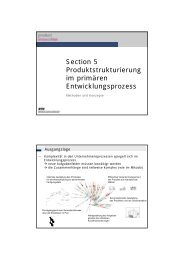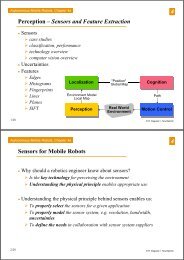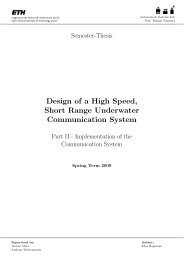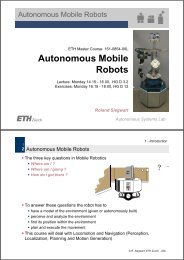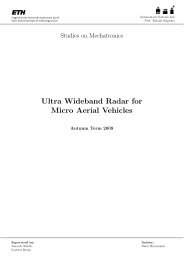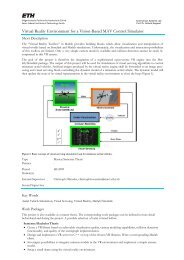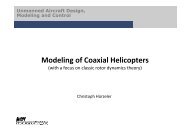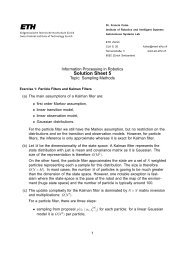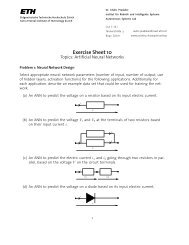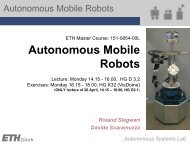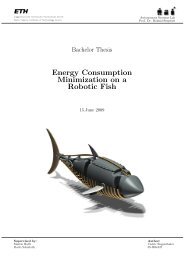Exercise - Autonomous Systems Lab
Exercise - Autonomous Systems Lab
Exercise - Autonomous Systems Lab
You also want an ePaper? Increase the reach of your titles
YUMPU automatically turns print PDFs into web optimized ePapers that Google loves.
<strong>Exercise</strong> 2Pose Control on a Diff-Drive Robot1 IntroductionIn this exercise, each group of three to four students programs and implements a closed-loop motioncontroller for a differential-drive robot. The controller may first be simulated in Matlab and then also betested on a physical Lego robot that communicates with the PC via a USB connection.2 System SetupDownload the exercise from the AMR course website and install the various helper programs asindicated in the README_INSTALL file.3 Pose Estimation via Differential Forward KinematicsFor a differential-drive robot, the kinematic model is described by the following equationsr rr lv 2 2r r rl 2l2lwhere ( v , )represent forward and rotational velocity of the robot platform, respectively, and ( , rl)the spinning speed of the right and left wheels. Wheel radius is given by r and l denotes half of theinter-wheel distance.Figure 1: State feedback control onto a reference pose.In <strong>Exercise</strong> 1 we derived that the position of the robot can be estimated by integrating its movement(i.e., summing incremental travel distances). For a discrete system with a fixed sampling interval t theincremental travel distances ( x,y,t)amount to:sxr s2lcossyr slsin2sr s2ll
<strong>Exercise</strong> 2Pose Control on a Diff-Drive Robot3.3 Closed-loop ControlFinally for a precise and smooth control of a differential-drive robot onto a reference pose, a linear statefeedback control law is described in the book Introduction to <strong>Autonomous</strong> Mobile Robots thataccompanies this class (see Chapter 3.6, p.91ff). The control law is summarized below. Variablescorrespond to the ones introduced in Figure 1.v k k kFurthermore, for strong stability, k5 2 0,k 0, k 03k kmust hold.Using this control law, implement a closed-loop position controller based on odometry estimates. This isagain to be implemented within ContStep.m. Test the controller for different target positions andorientations, both in simulation and on the physical robot.Helpful Matlab commands/files: atan2, and Set2range.m.



